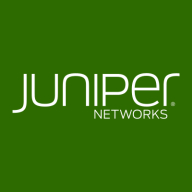

Juniper Mist Wireless Access Points and Cambium Networks Wireless LAN are competitors in the network management technology category. Juniper seems to have the upper hand due to its advanced AI-driven features for network optimization.
Features: Juniper Mist offers AI-driven network management with features like Marvis for dynamic problem detection, comprehensive network insight, and rapid updates. These capabilities provide nuanced control, aiding network optimization and user engagement. Cambium Networks focuses on ease of configuration, extended range, and no licensing hassles. Its stability and strong coverage make it suitable for environments needing point-to-multipoint connections.
Room for Improvement: Juniper Mist could improve pricing, third-party system integration, and AI-driven feature usability to expand accessibility. Cambium Networks could enhance configuration options, introduce features like bandwidth management and web filtering, and improve market visibility with more competitive pricing and streamlined deployment processes.
Ease of Deployment and Customer Service: Juniper Mist provides flexible deployment with various cloud configurations and well-rated technical support, despite some calls for faster service. Cambium Networks offers hybrid and on-premises setups with reliable customer service, though direct support could be enhanced.
Pricing and ROI: Juniper Wireless AP is costly but justified through high-end features and strong support, resulting in substantial ROI and network efficiency improvements. Cambium Networks offers competitive pricing with no additional licensing fees, providing substantial value for mid-sized businesses despite higher initial costs compared to some competitors.
They were always available when needed, which we appreciated.
The local team helps with issues primarily, and if they can't resolve them, they connect to the technical support team in the US, who are very much trained on resolving issues and providing support.
Cisco's support is very good and ranks 10 out of 10.
My impression of Juniper support is generally good, and I would rate it probably a 9.
Technical support is very good.
Ruckus provides better area coverage and interference withstanding capacity.
Allowing deployment of fewer access points while covering more area.
The cloud, which operates on Amazon Web Services (AWS), can support unlimited access points.
It's built for larger environments.
I believe the hardware used in Cambium Networks is pretty robust, and the radios are strong in terms of signal and performance.
Channel management required manual intervention, especially in environments with multiple floors, leading to potential signal interference issues.
I would want more WiFi products, specifically WiFi indoor access point products.
Cambium currently lacks such extensive analytics capabilities.
Juniper products are still coming to market, HP offers its own access point range, which competes with Juniper's premium Mist access points intended for enterprise customers.
The reporting logs require improvement in terms of clarity.
I suggest that the AI tool in the Juniper Mist Wireless Access Points needs to be a little bit more ChatGPT-like, allowing easier communication in normal language instead of requiring specific prompts.
Cambium's pricing is better compared to Ruckus, which has multiple components with associated costs, like license support and access point support costs.
Cambium Networks Wireless LAN was well-priced, comparable and not the most expensive nor the cheapest option available.
The price is very high, which is why not all enterprises can purchase this product.
Regarding pricing, Juniper's cost rates as a seven on a scale where one represents a high price and ten represents a low price.
Juniper Mist is cheaper than Meraki, placing it in the middle of the pack.
The product was scalable, allowing for fewer access points to cover more area, and supported a high number of clients.
Ruckus offers a more extensive coverage range and has better capacity to withstand interference, which I have experienced with Ruckus products.
The features of Cambium Networks Wireless LAN that I have found most valuable is cloud management, as Cambium has the feature for cloud control, and the UI is very easy, making managing access points and devices very easy in the cloud, which I found very useful.
I have gained valuable insights from the Mist Cloud's analytics and network insights, as it tells you a lot of things, including details about Microsoft Teams calls, identifying which calls were good or bad, and correlating that to the client's signal and which access point the client was connected to at the time.
From my perspective, the Juniper reporting logs are clear and provide necessary data, which supports better management and diagnosis.
It's a cloud solution with Mist, which helps troubleshoot and provides visibility to look at different access points.
| Product | Market Share (%) |
|---|---|
| Juniper Mist Wireless Access Points | 5.6% |
| Cambium Networks Wireless LAN | 1.4% |
| Other | 93.0% |


| Company Size | Count |
|---|---|
| Small Business | 14 |
| Midsize Enterprise | 2 |
| Large Enterprise | 2 |
| Company Size | Count |
|---|---|
| Small Business | 11 |
| Midsize Enterprise | 4 |
| Large Enterprise | 8 |
Juniper Wireless Access Points work in conjunction with Juniper Mist Cloud Services and Mist AI to deliver premier wireless access capabilities. The Juniper Mist Edge extends microservices to the campus to bring agility and scale while enabling new applications at the edge.
We monitor all Wireless LAN reviews to prevent fraudulent reviews and keep review quality high. We do not post reviews by company employees or direct competitors. We validate each review for authenticity via cross-reference with LinkedIn, and personal follow-up with the reviewer when necessary.